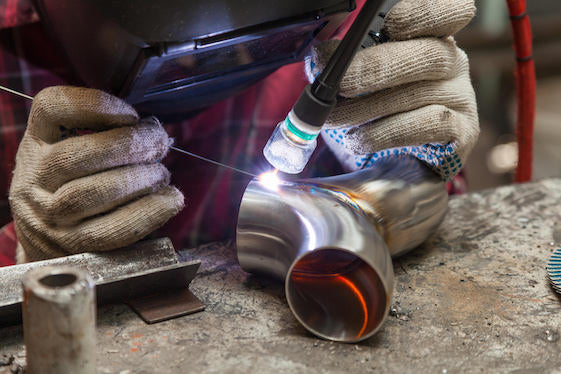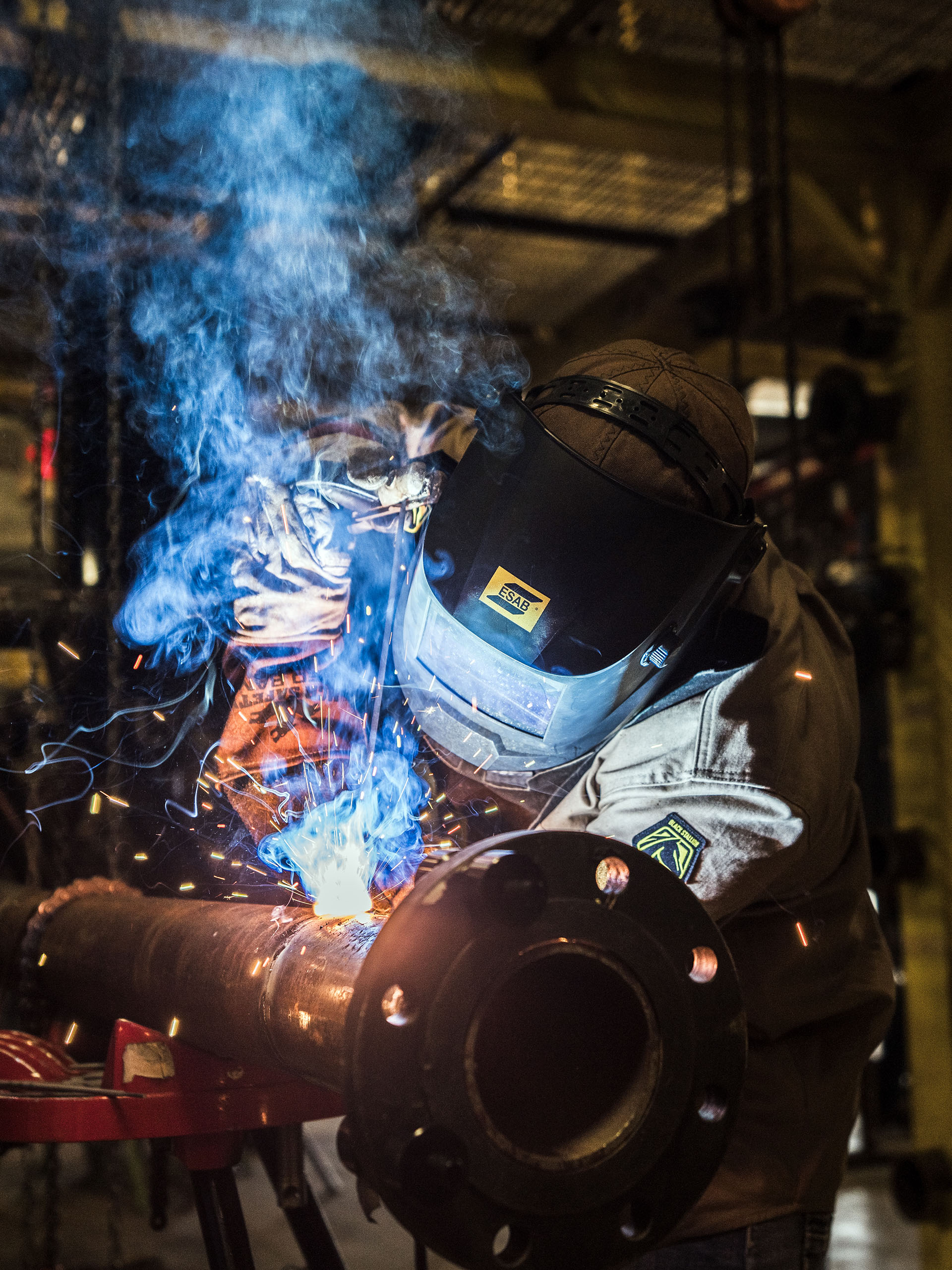Everything about Welding: Trick Insights Into Techniques and Finest Practices for Success
Welding encompasses a variety of strategies, each fit for details products and applications. Comprehending these techniques, such as GMAW, SMAW, and TIG, is essential for achieving excellent results. The right devices and safety techniques can not be ignored. As preparation and repairing play vital roles in the welding procedure, mastering these components can substantially improve the top quality of the end product. What are the crucial factors that ensure an effective weld?
Recognizing Various Welding Techniques
Welding strategies encompass a variety of approaches, each fit to certain applications and materials. Amongst one of the most common methods are Gas Steel Arc Welding (GMAW), Protected Steel Arc Welding (SMAW), and Tungsten Inert Gas Welding (TIG) GMAW, likewise understood as MIG welding, is prominent for its rate and adaptability, making it perfect for slim products. SMAW, or stick welding, is preferred for its simpleness and effectiveness in outside atmospheres, especially with thicker metals. TIG welding supplies precision and control, making it ideal for intricate job and non-ferrous metals (Belgrade Fabrication). Each technique has its special advantages and factors to consider, permitting welders to pick the finest method based upon the job's requirements, material type, and desired end results. Comprehending these methods is crucial for successful welding
Vital Welding Tools and Devices
While numerous welding strategies require particular skills, the right equipment and tools are just as essential for accomplishing quality outcomes. Necessary welding devices includes welding machines, which vary depending on the strategy-- such as MIG, TIG, or stick welding. Protective equipment, consisting of safety helmets, handwear covers, and aprons, warranties security and comfort during the process. Furthermore, clamps and fixtures help safeguard products in location, making certain accuracy in welds. Consumables like welding poles, cord, and shielding gas are also essential components that influence the high quality of the weld. Tools such as cutters and mills assist in surface preparation and post-weld ending up, contributing to an expert result. Buying premium equipment eventually boosts the effectiveness and effectiveness of welding jobs.
Safety Practices in Welding
Appropriate security methods are important in the welding industry to safeguard employees from prospective threats. Welders should use appropriate individual protective tools (PPE), consisting of headgears with proper shading, handwear covers, and flame-resistant apparel. Sufficient air flow is important to lower direct exposure to hazardous fumes and gases produced during the welding procedure. Furthermore, employees ought to be learnt the right handling of welding devices to stop accidents. Fire precaution, such as keeping combustible materials far from the welding area and having fire extinguishers readily available, are essential. Routine evaluations of devices and offices can aid identify prospective risks prior to they bring about crashes. By sticking to these security methods, welders can produce a more secure working setting and reduce dangers connected with their profession.
Preparing Materials for Welding
Preparing materials for welding is an essential step that substantially affects the top quality and integrity of the last item (Belgrade Welding). Appropriate preparation involves cleaning the surface areas to remove contaminants such as oil, dirt, and rust, which can jeopardize the weld. Strategies such as grinding, fining sand, or utilizing solvents are typically used to accomplish a clean surface. Additionally, making certain that the materials mesh comfortably is vital; spaces can bring about weak welds. It's additionally important to take right into account the placement and positioning of the parts, as this will certainly impact the convenience of welding and the last end result. Lastly, selecting the proper filler product and making sure compatibility with the base steels is necessary for attaining strong, sturdy welds
Tips for Achieving High-Quality Welds
Accomplishing premium welds requires focus to detail and adherence to ideal practices throughout the welding process. Proper joint preparation is crucial, making sure surface areas are clean and totally free from contaminants. Selecting the suitable filler product and welding strategy based upon the base metals is critical for suitable bonding. Keeping regular travel rate and angle while welding can stop problems and promote harmony. Additionally, regulating heat input is essential; excessive warmth can result in bending and compromised joints. If essential, consistently examining the welds throughout the procedure permits for prompt modifications. Utilizing appropriate post-weld therapies, such as cleaning and anxiety alleviation, can enhance the toughness and honesty of the weld, eventually making certain a successful end result.
Fixing Usual Welding Issues
Welding often provides challenges that can impact the high quality and stability of the end product. Typical issues such as porosity, irregular weld beads, and getting too hot can occur, each requiring certain fixing techniques. Recognizing these issues is crucial for welders to improve their abilities and attain perfect results.
Porosity Problems Explained
Although porosity can frequently be ignored, it continues to be a vital issue in welding that can compromise the integrity of a finished product. Porosity his response describes the visibility of tiny gas pockets within the weld bead, which can lead and damage the joint to premature failure. This issue generally arises from contaminants, wetness, or improper protecting gas insurance coverage throughout the welding process. To mitigate porosity, welders must validate that the base materials are tidy and completely dry, use proper shielding gases, and keep regular welding parameters. On a regular basis examining the devices and environment can likewise help identify potential issues prior to they manifest in the weld. Addressing porosity properly is essential for accomplishing strong, resilient welds that fulfill high quality requirements.

Irregular Weld Beads
Inconsistent weld beads can greatly impact the quality and stamina of a completed product. Different factors add to this problem, consisting of inappropriate traveling speed, wrong amperage settings, and inconsistent electrode angles. When the welder moves as well swiftly, a grain may appear slim and do not have infiltration, while relocating also gradually can trigger too much accumulation. In addition, using the wrong amperage can cause either undercutting or too much spatter, both of which compromise weld honesty. The welder's technique, such as irregular torch movement, can likewise cause uneven grain look. To mitigate these issues, welders need to concentrate on maintaining stable, regulated motions and guaranteeing correct equipment setups to attain harmony in their welds. Uniformity is crucial to accomplishing trusted and solid welds.
Getting Too Hot and Bending Issues
Excessive warm throughout the welding procedure can bring about considerable getting too hot and deforming problems, influencing the structural integrity of the work surface. These issues usually show up as distortion, which can jeopardize positioning and fit-up, making additional assembly testing. Variables contributing to overheating consist of the option of welding parameters, such as voltage and take a trip speed, as well as the type of product being bonded. To alleviate these issues, welders must preserve consistent traveling speed and suitable heat input while keeping track of the work surface temperature level. Furthermore, pre-heating or post-weld warm treatment can assist reduce stresses brought on by quick air conditioning - Belgrade Fabrication. Routine assessment and adherence to ideal techniques are vital in protecting against getting too hot and guaranteeing the durability and reliability of bonded frameworks
Frequently Asked Inquiries
What Are the Job Opportunities in the Welding Market?
The welding industry provides diverse career opportunities, consisting of settings as welders, designers, inspectors, and teachers. Professionals can function in manufacturing, building, aerospace, and automotive industries, benefiting from solid need and competitive salaries in various duties.
How Can I Enhance My Welding Speed Without Giving Up Quality?
To boost welding speed without sacrificing top quality, one should exercise efficient strategies, keep tools, maximize settings, and enhance hand-eye sychronisation. Routine training and looking for responses can additionally greatly contribute to attaining much faster, top quality click for info welds.
What Certifications Are Offered for Welders?
Countless accreditations exist for welders, consisting of those from the American Welding Culture (AWS), the National Facility for Building Education And Learning and Research Study (NCCER), and numerous industry-specific organizations. These qualifications boost employability and demonstrate ability proficiency.
Exactly How Does Welding Affect the Qualities of Metals?
Welding affects the properties of metals by modifying their microstructure, which can result in adjustments in ductility, stamina, and solidity. Warmth input and air conditioning prices throughout the process greatly impact these product characteristics.
Can I Weld Dissimilar Metals Together?
